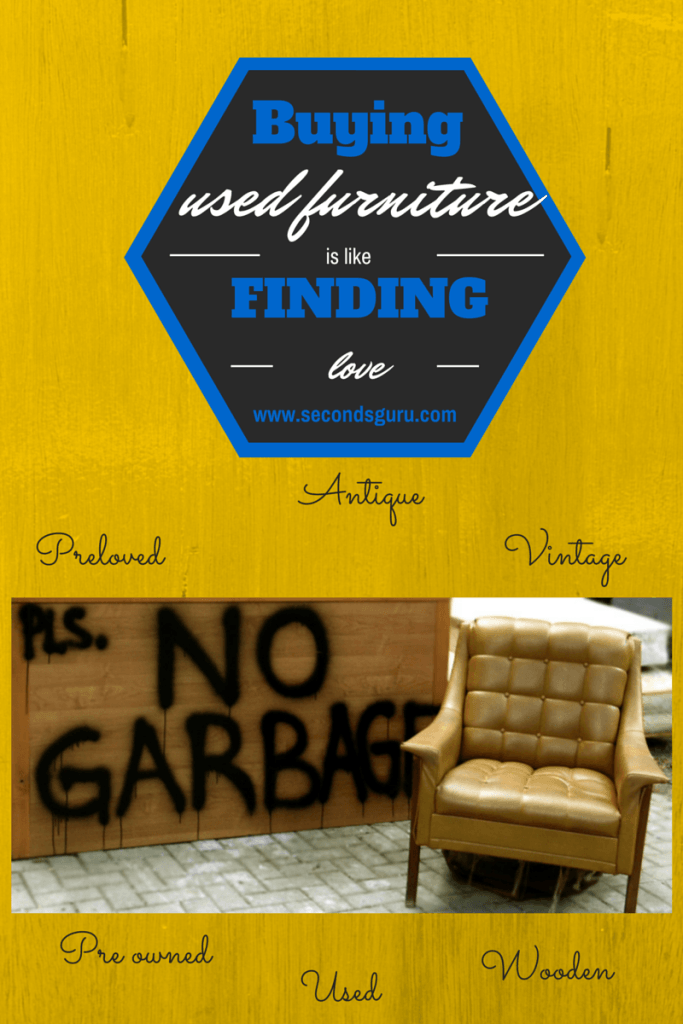Published 16 March 2015 ● Last Updated on 6 April 2021

Picture Source: morguefile.com via jeltovski
My art history teacher in design school often told us ‘there are no rules to liking art or falling in love, just go with your heart’. Buying wooden furniture, especially ones with a bit of a history is both like loving art and finding love. They need to appeal to you beyond the prosaic functionality, you need a certain je ne se quoi as you literally live with it and you either rest on it or it is the keeper of your precious worldly belongings.
Like finding love in modern times, it is a bit of a hunt. Irrespective of what you call it, ‘pre-owned’, ‘gently used’, ‘antique’,’vintage’ or what your motives are to buy them- aesthetics, a shoe string budget or simply the thrill of using something that has had a life before you- the experience is both fun and enriching.
There are six things one should keep in mind before you get your hunter’s skates on because it’s not all about the heart.
1) Keep looking: Don’t expect to find the ‘piece de resistance’ the moment you decide you need it. You need to be on the constant look out. You could get lucky and find a piece that you love in the first hour on secondsguru.com or you could spend months trawling stores, antique streets, your neighbour’s garbage and eventually find something in an estate sale. Keeping your eyes open all the time in the most obvious and not so obvious places definitely pays off.
2) Measure, meet and try before you commit: Like dating, don’t agree to bring a piece of furniture home based on a telegraphic description and grainy photo posted by a seller with ‘Hello Kitty’ as a profile picture. There is nothing wrong with having Hello Kitty or any other caricature as a profile picture (except I would question their level of taste and its unlikely you would Tinder them). But a seller without a face is sometimes an amber warning, which graduates to red if they don’t allow an inspection before green bills are swapped. Furniture is a sizable commitment, so measure, see, try and check for damage before you even begin to haggle on the price. On a side note, yes definitely haggle on the price and ask why they are selling a piece. A lot like checking why the swoon-worthy 40 years old with an internet start-up brewing for an IPO is still single.
3) Look for good bones: Furniture that stand the test of time, rowdy children, teething dogs, the beer-bellied boyfriend who thumped his fist on the table every time Man U won a match ( I know that’s not happened in a while, but you get my gist), are the ones which have strong bones. Look for good proportions (golden ratio if possible), good workmanship (a neat dove tail joinery, lathe turned legs etc), quality of wood (denser the wood, the better it is), no insect or bug damage. Discount surface water damage or a slight discolouration or two, you can refinish the piece. Broken or missing hardware is likely to reduce the price of the piece, but you can always replace those with new pieces. Stained, soiled fabric, batting or anything tensile -don’t even make it a sticking or a convincing point. You will replace them! Unless you notice an 80’s sofa upholstered in a hand woven jacquard or Kurdish Kilim, in that case junk the sofa (with the beer bellied boyfriend if possible), dry clean the fabric and hang it up like art. They don’t make them anymore, so don’t use it, deify it instead.
4) Be ready to put in some hard work: Most seconds furniture you find in your budget are not going to be finished like David Beckham (even he needed Posh Spice to spruce him up). So be ready to put in some TLC and some elbow grease, not necessarily yours; you could get your friendly handy man to do the hard work of making your find ready for the cover of House & Garden! The right fabric, a lick of polish, some new metal trimming or just simply a good scrub and wipe down makes a big difference. So when looking, imagine beyond the dust, grime and cracks and look for the potential of what it would look like once you are done with it 😉
5) Be flexible: It is fantastic if you know what you like and what you want. It helps narrowing down hopefuls. However you need to be flexible, because you will rarely find one to match your check list. If your house is an Ikea or a Vitra catalogue look, doesn’t mean you restrict your aesthetic range to modern clean lines. Be open to other styles: Mid-century pieces contrast beautifully with ethnic pieces from Africa and Middle East; Scandinavian or Bauhaus styles compliment Balinese classics for a beautiful polished beach living style. If mix-n–matching styles is not your thing, try and look beyond the obvious function of a piece. Lord Grantham’s writing table from Downton Abbey would be a great bar or side board for my pint-sized Hong Kong living room (I dream, you don’t need to haggle for them) or chairs make great bed side tables. Remember SJP’s original bedroom in Sex and the City. Ladders for book racks, armoire for media center, apothecary drawers for jewellery racks, the options are limitless. Just do it with confidence and style it up.
6) Finally ask your self, “Is it right for me?”: Know when to pass off a great find if it is too big for your flat, involves restoration work beyond a Saturday morning’s effort (irrespective of your skill level) or needs you to break your front door to hoist the object in with industrial sized machines, or you simply cannot think of an obvious use. Let it go! It might be perfect for your uncle’s beach house, for the presidential palace or for the loft your girlie-pal turned banker turned DIY queen of Asian TV lives in. However, it is not for you, your home or the life choices you made.
Happy hunting!
-Sushmita Munshi
Sushmita, our guest blogger, is someone who having moved 3 countries (and 3 houses) in 3 years, knows a lot about decluttering. She is an alumnus of National Institute of Design, Ahmedabad, India and an after-hours food and lifestyle enthusiast. In her day job as a User Experience Consultant at Accenture and WPP, she helped Fortune 500 companies maximize their returns from their digital initiatives. She currently heads up Distribution Technology and Strategic Projects for a leading insurer in Hong Kong.
Related Article: Sushmita Munshi- Tips on how to Declutter your closet.



0 Comments